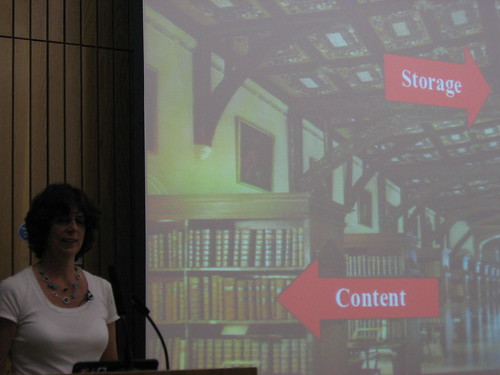
Anusha and I are running a first round of user tests. For this we are using a mockup of the BluePages that Monica made with
Balsamiq. Nice tool by the way, you can see some screenshots of a previous version of our mockup
here.
I am using the term
user tests as we are aiming to do a bit more than just asses the usability of our initial design. With these tests we are also trying to assess the
perception of usefulness of the BluePages. That is, how useful a tool like the BluePages and/or the information that it offers is to its users' work. I think perception of usefulness plays an equal or perhaps more important role than usability in the acceptance of a technological tool. If a tool is user friendly but users do not think is useful for their work, they will not use it.
The stakeholder analysis revealed that people around the University already deal with research activity data by using their own systems (manual, computer or mixed). These systems are sometimes not as efficient as they could be but people trust them becasue they work for them. Therefore new tools like the RII and the BluePages should allow users to:
- do what they are already doing in a more efficient and faster way (less rekeying, less duplication of data,)
- do things they could not do or struggled to do before (collect a list of experts in one field from across the University,)
- discover new uses to this information (find connections between people and between projects through their keywords.)
Anusha and I designed a user test script, comprised of some questions and tasks. In one of the tasks, for example, we ask testers to find someone with a particular expertise who can guide them in the design of a laboratory.
At the end of the tests we have informal conversations (with tea/coffee and buscuits!) We ask testers their overall opinion of the site and if they would like/need to use a tool like this for their work.
Tests have been very useful so far to refine our initial design but most importantly to define clear purposes and uses for the BluePages. With this we want to position the BluePages within our stakeholders work environments and with that to improve user acceptance.
Main points we want to emphasise in the BluePages are
collaboration,
connections (networks) and
membership. These are ideas that we want to emerge from the BluePages through its use. In other words we want people to think that the BluePages is a tool for collaboration, for making connections and for improving membership.
- Collaboration means that users can find who is collaborating with whom in Oxford. It also means that people listed in the BluePages are potential collaborators for whoever is browsing them. Therefore if anyone would like to collaborate in or outside Oxford they would probably like to be in the BluePages.
- Connections means that the BluePages can allow people to discover connections which were not clear before. For example connecting people who did not know each other by their research interests, or connecting research activities by their keywords or themes.
- By emphasising the concept of Membership we would like encourage Oxford research staff to contribute their data to make their research community more visible and more accessible within and outside the University.
 Sally and Ben were in Edinburgh last month attending the Beyond the Repository Fringe 2009, an event for repository developers, managers, researchers, administrators and onlookers.
Sally and Ben were in Edinburgh last month attending the Beyond the Repository Fringe 2009, an event for repository developers, managers, researchers, administrators and onlookers.






